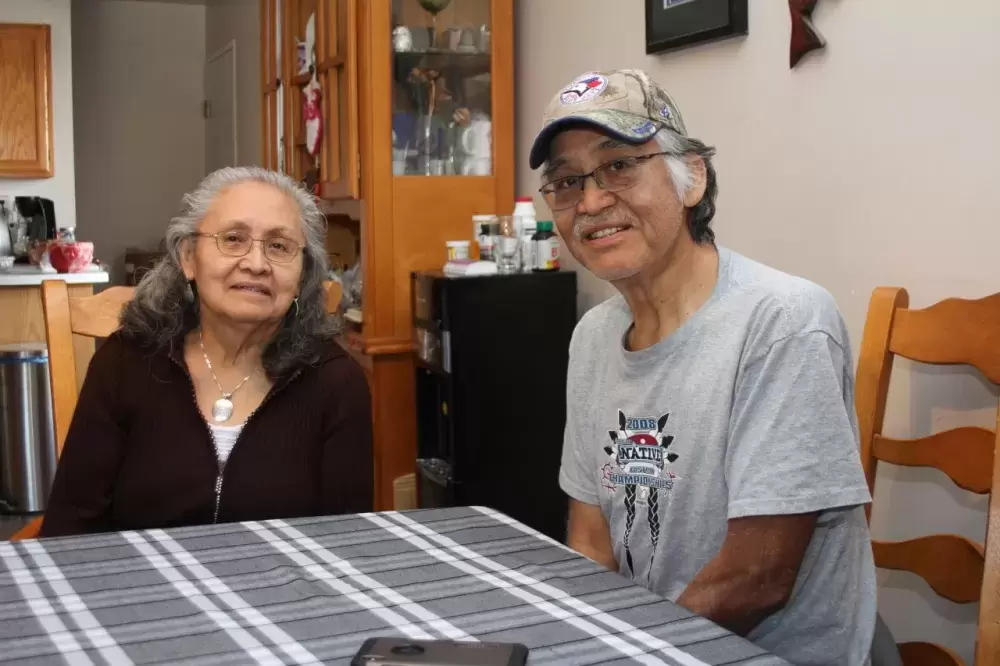There are 28 general practitioners working in Port Alberni, as listed with the College of Physicians and Surgeons of British Columbia. Serving the Alberni Valley’s population of over 25,000, this works out to one family doctor for every 900 residents.
It’s an indication of an innately stressed medical system that can leave individuals underserved - until they end up in the emergency room with a crisis - particularly with respect to older Nuu-chah-nulth residents in the mid-Vancouver Island city.
Benedict Leonard is a nurse navigator with the Nuu-chah-nulth Tribal Council. He regularly sees First Nations patients rely on the West Coast General Hospital’s emergency department to treat chronic conditions, including one person who recalled being sent home several times over the course of a week.
“Someone I spoke with had this progression of visiting the emergency multiple times in a week and was told on the last visit, ‘Why did you let it get this bad?’” said Leonard. “Ultimately people are not getting treated like people; they’re not being listened to.”
As the NTC’s health promotions worker, Matilda Atleo has seen many cases of Nuu-chah-nulth patients being frustrated with the available medical care in Port Alberni.
“I think it has a lot to do with even how the doctor talks to them,” she said. “Once they’ve received this treatment, they don’t want to go back, so they just avoid it until they get really sick.”
“A lot First Nations are going to Nanaimo, because they’re not getting any help here,” added Atleo.
To better serve First Nations patients, the West Coast General has an aboriginal liaison nurse on its staff, as do hospitals throughout Vancouver Island. This position helps Indigenous patients by referring them to relevant community services, supporting families and accessing non-insured health benefits.
This additional help seeks to improve upon a provincial trend of First Nations reporting worse health indicators than others in B.C. A report released last year by the First Nations Health Authority shows higher rates of chronic conditions like heart disease and diabetes among B.C.’s Indigenous peoples. Although life expectancy has slightly improved over the last 20 years, with an average age of 75 the province’s aboriginal peoples die eight years sooner than the rest of the population, according to the 2018 Indigenous Health and Well-being report.
In October Dr. Sam Williams, the West Coast General’s chief of staff, spoke of the hospital’s ongoing efforts to improve its relationship with First Nations patients.
“We are trying very hard in our emergency room to improve the care that we are giving to our most vulnerable patients,” said Williams during a panel discussion at the NTC’s Disability Access Committee’s Health-Ability Fair. “We are halfway through - with the help of many elders from the Nuu-chah-nulth Tribal Council - to provide accommodations and put in place real change in our emergency so that when you come, we are treating you with kindness, cultural humility and real knowledge and curiosity with our dealing in trauma from the past.”
For many older Nuu-chah-nulth-aht in Port Alberni, trauma from the past will often be tied to Indian residential school.
“We’re residential school survivors, most of us elders that are in Port Alberni now,” said Donna Samuel, who attended the Alberni Indian Residential School. “We didn’t get very good food at the residential school, we did lots of stealing, somehow get into the pantry to get fruit and stuff. It probably affects lots of elders as they grow older.”
Donna and her husband Wally Samuel Sr., who also attended the Alberni institution, regularly work with and advocate for Port Alberni’s many Nuu-chah-nulth elders who need help. The couple has observed that medical care is not the only issue that goes neglected, and many elders rely on their basic old-age pension for income.
“A lot of them were private fishermen, never paid into any pension plans, so a lot of them are low income and that’s why they have to continue working,” said Wally. “They’ve just got enough to get by.”
“This time of the year is very important. We had an auntie who didn’t file her taxes for two years before she passed away and nobody knew,” added Donna. “She was a residential school survivor and what she had in the bank was what she was surviving on.”
Wally has observed a lack of understanding among home care workers serving older Nuu-chah-nulth-aht, who in some cases have even “locked the door and don’t answer it anymore” to avoid bossy advice.
“We’ve had to help a couple of elders getting their medical needs met,” said Wally. “They keep going to the hospital and getting sent home. The hospital assumes they have support at home, but the support that they’re thinking of is the non-aboriginal home care workers. According to the elders who tell us, they are not culturally sensitive. You’re just a number to them; they don’t look into what foods you like.”
These issues were addressed on a national level with the Truth and Reconciliation Commission’s 94 Calls to Action, which directs the federal government to “close the gaps in health outcomes between Aboriginal and non-Aboriginal communities.”
“We need to do the paradigm shift that the Truth and Reconciliation Commission asked for,” said Dr. Williams during the panel discussion. “There is no us and them; there is just us working together.”







